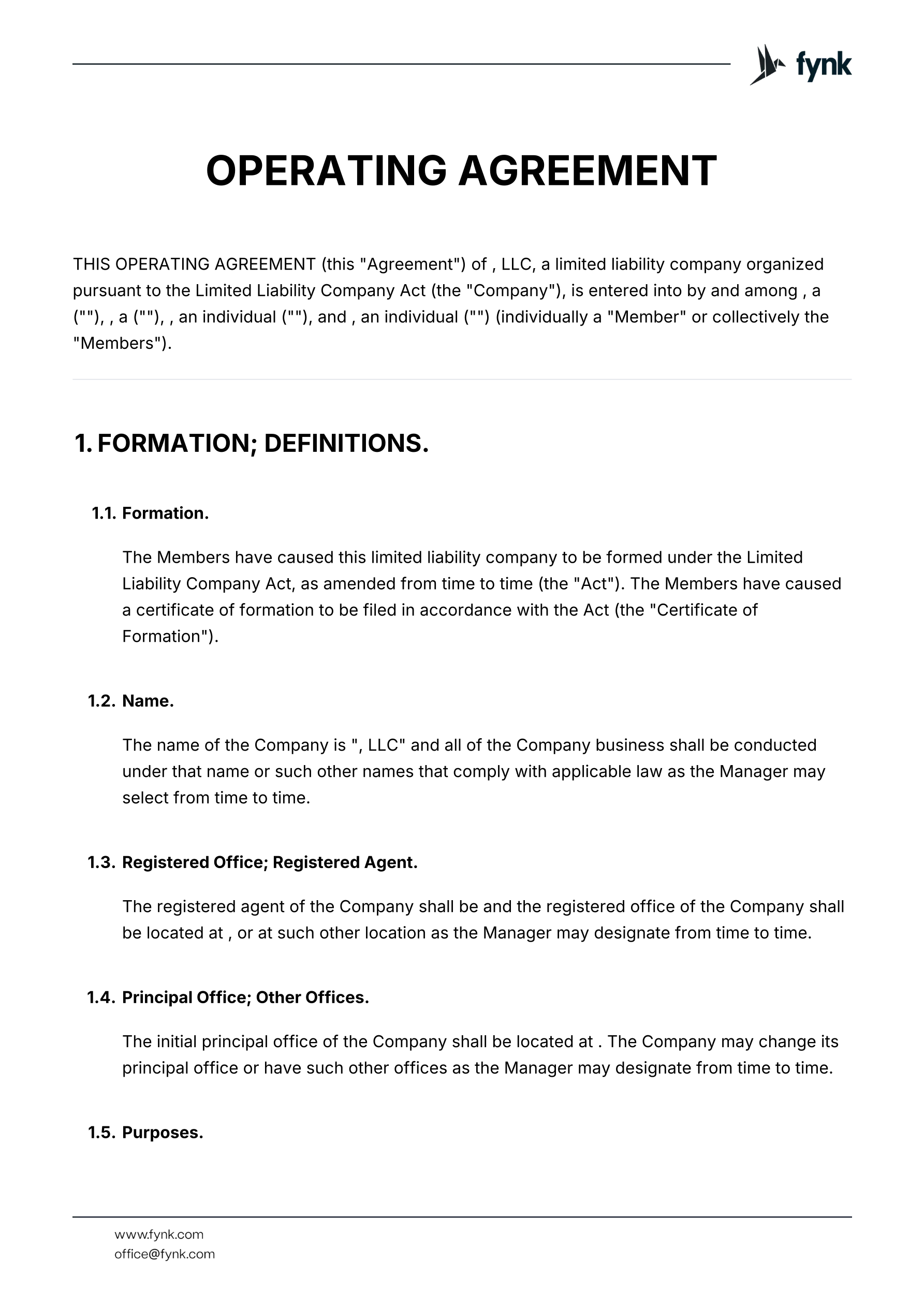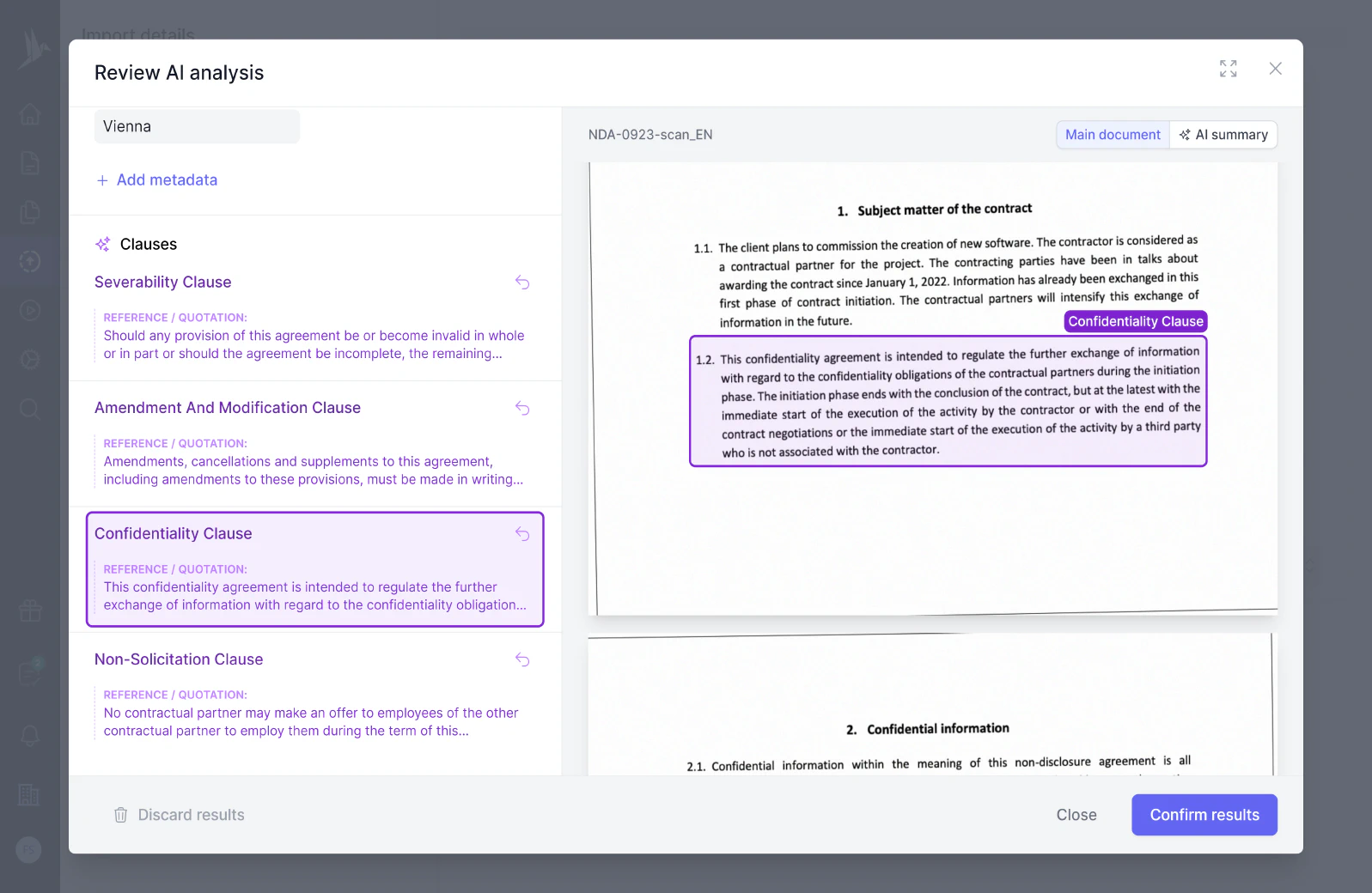
Operating Agreement Template for LLCs
A comprehensive operating agreement template defining LLC formation, management structure, member rights, and financial arrangements.
A bring down certificate is a document provided at specific intervals during a transaction, reaffirming that the representations and warranties made earlier in the agreement remain true and accurate as of the current date. This certificate is commonly used in merger and acquisition deals to ensure that no material changes have occurred since the initial signing of the contract.
Buyer shall have received a certificate, dated the Closing Date and signed by Seller, that each of the conditions set forth in Section 8.2(a) and 8.2(b) have been satisfied (the “Seller Bring Down Certificate”)
Closing Bring Down Certificate. (a) No earlier than two (2) Business Days prior to the Closing Date and no later than one (1) Business Day prior to the Closing Date, the Sellers shall review the Business Representations and shall inquire each other and the persons listed in Annex (B) to the Warranty Agreement in order to disclose the exceptions to the Business Representations that reflect any facts, events or matters that have occurred between the Signing Date (included) and the Closing Date (excluded) and which render any of the Business Representations not being correct or complete as of the Closing Date ("Closing Bring Down of Disclosures"). The Sellers shall disclose the results of the Closing Bring Down of Disclosures by executing and delivering to the Purchaser a "closing bring down disclosure certificate", a draft of which is attached as Annex 6.10(a) TC "Annex 6.10(a) Closing Bring Down of Disclosures" \f \l 2 either (i) confirming that the Business Representations are still correct and complete as of the Closing Date or (ii) specifying in reasonable detail the facts, events and circumstances which render the Business Representations not being correct and complete as of the Closing Date (the "Closing Bring Down Certificate"). For the avoidance of doubt, (i) any Closing Bring Down of Disclosures made in the Closing Bring Down Certificate shall qualify any representations made as at the Closing Date and (ii) the Closing Bring Down Certificate shall not limit Seller(s)' liability for any breach of a representation given by the Sellers on the Put Option Date and/or on the Signing Date, as the case may be and (iii) the Closing Bring Down Certificate and the information and disclosures made in the Closing Bring Down Certificate do not preclude, hinder or limit the Purchaser in any way from making any claim (i) for specific performance, (ii) arising out of a breach of the representations and warranties given by the Sellers under Article 4 and/or (iii) under any other provision of the SPA.
The Purchaser shall have received from the Seller at the Closing an officer’s certificate, dated as of the Closing Date and duly executed by a duly appointed officer of the Seller, certifying that each of the conditions set forth in Sections 6.2(a) and (b) has been satisfied (the “Seller’s Bring Down Certificate”)
Bring Down Certificate. Buyer will have received a certificate executed by Seller confirming (a) the accuracy of its representations and warranties as of the date of this Agreement and as of the Closing Date in accordance with Section 7.01 and (b) the performance of and compliance with its covenants and obligations to be performed or complied with at or prior to the Closing in accordance with Section 7.02.
A written certificate stating that all representations and warranties contained in Section 9.01 remain, as of the Closing Date, true, correct, and complete in all material respects as when first made hereunder (the “Bring Down Certificate”).
On Closing, each of the Parties which have made representations or warranties in this Agreement shall execute and deliver to the other Parties a bring down certificate (each such certificate being hereinafter referred to as a “Bring Down Certificate”) confirming that its representations and warranties, in each case as may be amended pursuant to Section 4.7, are true and accurate in all material respects as if made on and as of the Closing Date, subject always to the limitations and conditions of this Article 8, Article 10 and other relevant provisions of this Agreement; provided that Smart shall be entitled to amend any of its representations and warranties in the Bring Down Certificate as necessary to fully and accurately set out the status, as of the Closing Date, of the matters that are the subject of such representations and warranties, including such amendments as may be required to set out any matter.
Bring Down Certificate. The Investor shall have received on and as of the Closing Date a certificate of an executive officer of the Company confirming that all of the representations and warranties of the Company in this Agreement are true and correct on and as of the Closing Date, and that the Company has complied with all agreements and covenants and satisfied all other conditions on its part to be performed or satisfied hereunder at or prior to the Closing Date.
Bring Down Certificate. A bring-down certificate executed by Seller in the form of Exhibit J attached hereto, confirming whether the representations and warranties made by Seller in Section 11.1 hereof continue to be true and correct in all material respects.
A Bring Down Certificate is a legal document used primarily in business transactions, particularly in mergers and acquisitions (M&A). It serves as a formal statement affirming that certain representations and warranties made in an original agreement remain true and accurate up to a specific point in time, usually until the closing date of the transaction. Essentially, it “brings down” the veracity of previous statements to the present.
You should use a Bring Down Certificate in the latter stages of transactions such as M&A deals, financing arrangements, or other contract-heavy processes where due diligence has been done. It is typically employed at closing to reaffirm that all representations and warranties given by the parties earlier in the process remain accurate as of that date. Using a Bring Down Certificate helps protect all parties involved by ensuring there are no material changes in the conditions that were initially agreed upon.
When writing a Bring Down Certificate, it is essential to include specific elements to ensure its effectiveness and legitimacy:
Bring Down Certificate
Date: [Insert Date]
To: [Name of Other Party]
This Bring Down Certificate is provided in connection with that certain [Type of Agreement], dated [Original Agreement Date], by and between [Party A] and [Party B].
The undersigned, [Authorized Signatory], hereby certifies that all representations and warranties contained in the Agreement, as of the date hereof, are true and correct in all material respects as if made as of the date hereof, except as disclosed or known.
[Authorized Signatory Name and Title]
[Company Name]
Date: [Insert Date]
Bring Down Certificates are commonly found in various types of contracts, particularly those involving high-value, complex transactions or significant risk. Typical contracts include:
Using a Bring Down Certificate in these contexts minimizes risk by confirming the parties’ continued compliance with prior representations and warranties.
These templates contain the clause you just read about.

A comprehensive operating agreement template defining LLC formation, management structure, member rights, and financial arrangements.
Dive deeper into the world of clauses and learn more about these other clauses that are used in real contracts.
A buyback option is a contractual clause that grants the seller the right, but not the obligation, to repurchase an asset from the buyer at a predetermined price within a specified timeframe. This provision is often used to protect the seller's interests, allowing them to regain ownership under certain conditions or capitalizing on market changes.
A buyout clause is a contractual provision that allows one party to terminate the agreement by paying a predetermined amount to the other party, essentially permitting the purchase of rights or release from obligations. Typically utilized in employment contracts, sports agreements, or partnership terms, a buyout clause provides financial security and predictability by outlining the conditions and costs associated with ending the relationship early.
A call right is a contractual clause that grants a party the ability to buy a specific asset or financial instrument at a predetermined price within a certain period. This provision is often used to provide flexibility and control to the party holding the right, allowing them to capitalize on favorable market conditions or strategic opportunities.
Try our AI contract analysis and extract important clauses and information from existing contracts.
< <
Fill out the form and we will get in touch with you to give you a personal, customized demo of fynk.
Greetings!
I'm Markus, co-founder of fynk. After you've submitted the form, I'll swiftly get in touch with you.
Also, right after you submit your details, you can pick a time that works best for you for our meeting.

